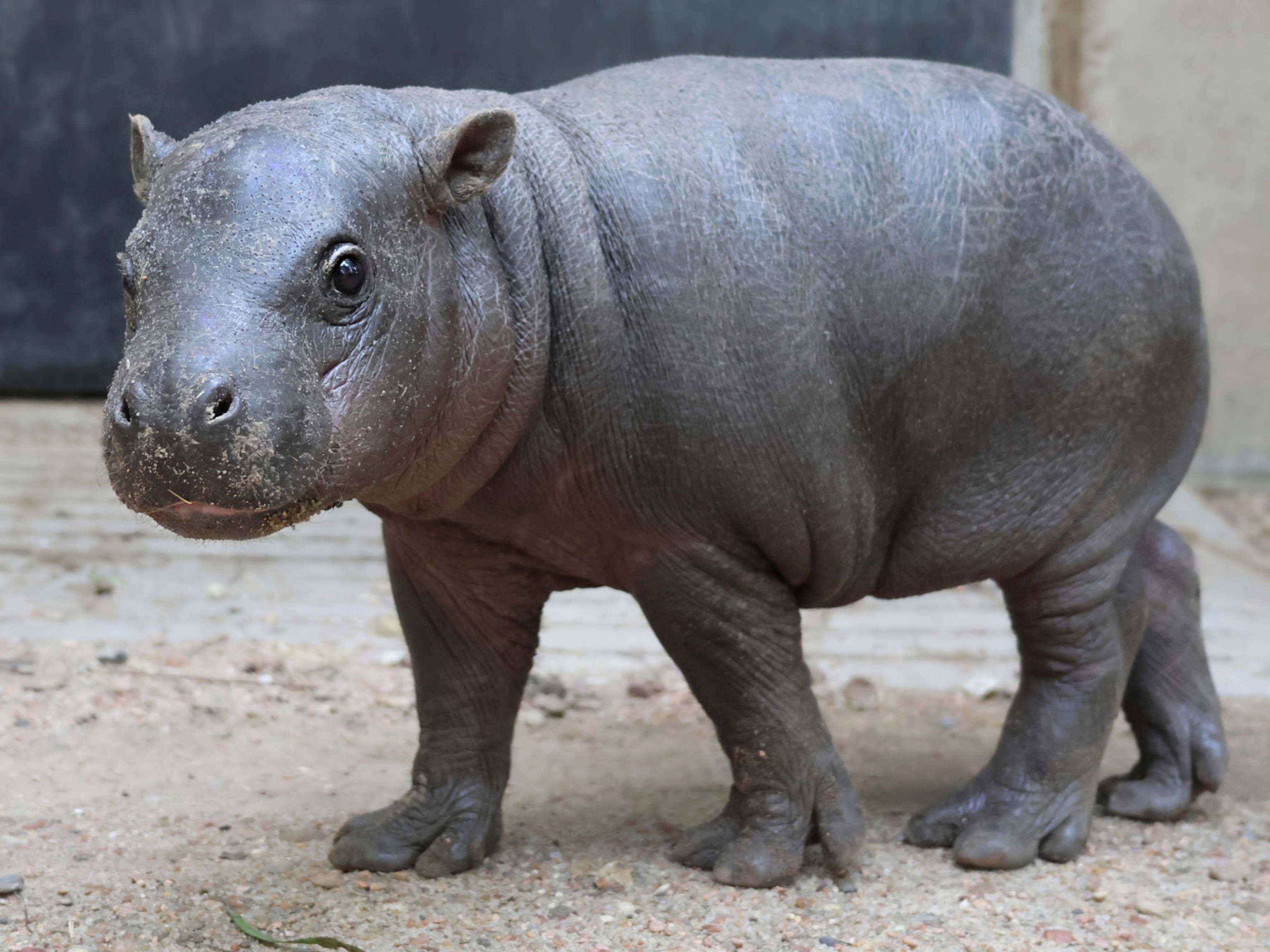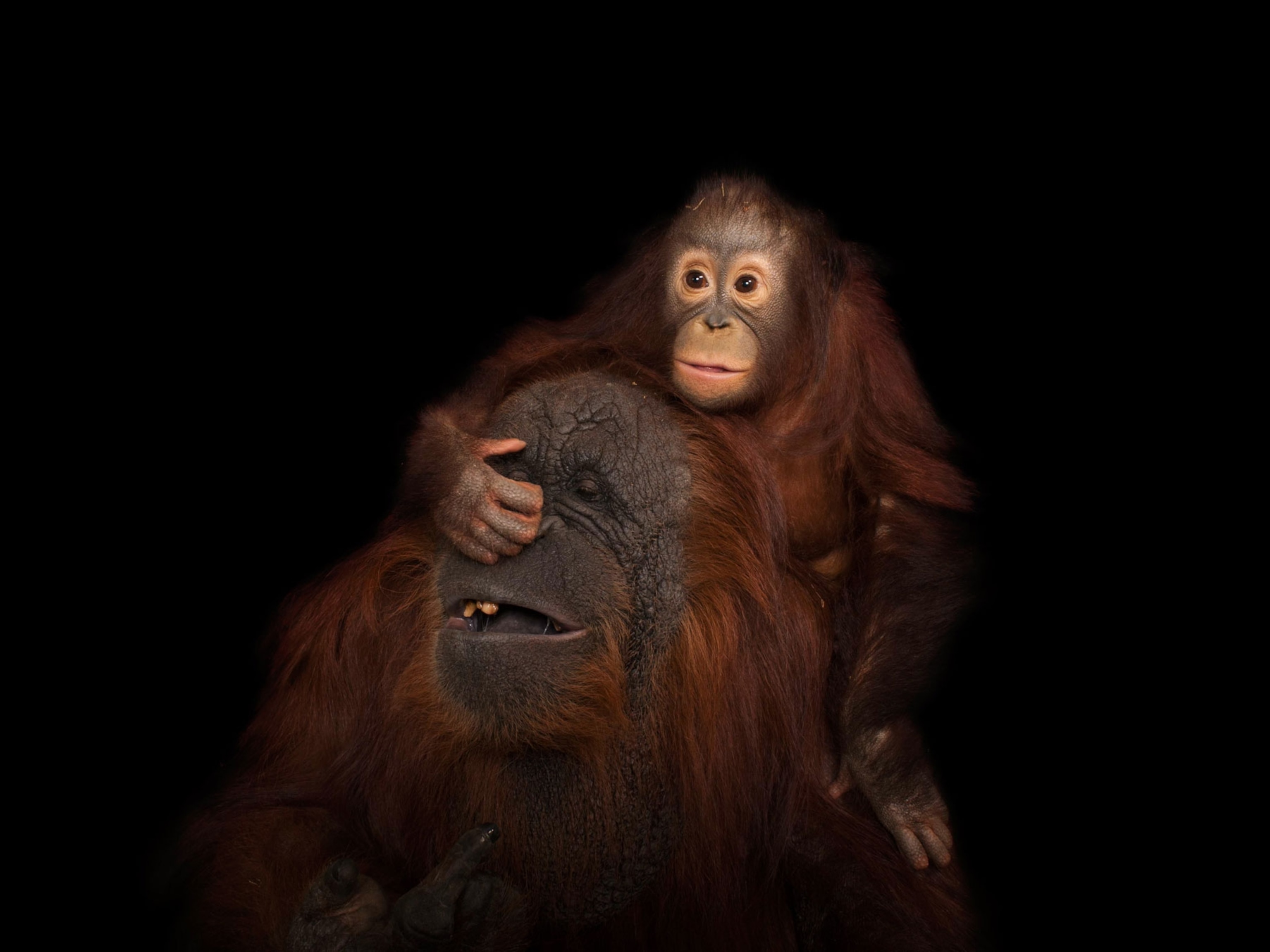Mother hippo may be grieving dead baby in new video
The footage, which shows a female tending to a carcass in Botswana, is the first to scientifically describe mourning behavior in hippos.
It was 6:45 a.m. in Botswana’s Chobe National Park when Victoria Inman realized something was off.
Normally, 25 hippos would be lounging in this scenic lagoon by the Chobe River, but on this September day in 2018, the pond appeared empty—other than an object floating in the water.
As she got closer, Inman, a biology Ph.D. student at the University of New South Wales in Sydney, Australia, saw the carcass of a juvenile hippopotamus, roughly six months old and about the size of a domestic pig.
Suddenly a female hippo emerged, swimming toward the carcass aggressively. The biologist moved back and observed, fascinated, for the next 11 hours as the “distressed and confused” female—likely the mother—and later the rest of the pod tried to keep the carcass afloat and chased away Nile crocodiles. The female also frequently blew bubbles around the carcass—a common method of hippo communication.
“The way she was trying to hold it above the water was like, I still want this thing to be breathing,” says Inman, lead author of a recent study on the incident, published in the African Journal of Ecology.
The study is the first to scientifically describe what may be grieving in hippos, complete with video footage.
An animal caring for a sick, injured, or dead individual of its own kind is referred to as epimeletic behavior, and besides humans and great apes, it’s been documented in elephants, peccaries, and orcas, among other species. (Related: "Whales mourn their dead, just like us.")
“It seems that we’re getting more and more anecdotes or observation of this type of behavior across a really wide variety of species,” says George Wittemyer, a conservation biologist at Colorado State University who was not involved in the hippo research.
Social creatures
According to Wittemyer, such grieving behavior seems particularly common among highly social species, such as hippos.
Though “we tend to anthropomorphize it as bereavement,” it’s unknown exactly what an animal spending time with a dead body is thinking or doing, he says.
But, he says, it seems normal that a mother that invested so much time in the raising of a calf would be disturbed at its death. (Learn if crows hold "funerals" for their dead.)
Inman says that she’s uncertain how the baby hippo died, but one of the two male hippos in the pod may have killed it during a power grab. (Read more about hippo infanticide.)
And though she can’t be certain the adult female tending to the corpse was the mother, Inman says it’s a good guess based on the animal’s swollen mammary glands and protective behavior.
Was she grieving?
Barbara King, professor emeritus at the College of William & Mary in Virginia, believes some animals certainly feel grief, such as the mother orca that carried its dead calf for a thousand miles.
Hippos are closely related to cetaceans, but King isn’t sure whether the hippo was actually grieving, since much of the action happens underwater and out of sight.
“My bottom line would be that [grief] is definitely a possible interpretation,” says King, author of the book How Animals Grieve. She noted the study authors’ observation that the mother and pod were clearly behaving abnormally. (See pictures of a gorilla mother possibly mourning her dead baby.)
Other possible explanations could be curiosity about the dead body or protecting the corpse—perhaps some sort of territorial possession—but she doesn’t believe either of these things exclude the idea that the hippos might be feeling grief.
Group effort
For Wittemyer, the fact that other members of the pod interacted with the corpse is the most interesting part of Inman’s observation.
At some point around midday, the entire hippo pod moved from the river to the lagoon, where they swam with the dead calf and kept it afloat, in much the same way as the mother. (Also see unusual pictures of a lion and hippo facing off.)
Wittemyer says that’s evidence that hippos have intricate social bonds, which opens up new questions about hippos’ cognitive abilities and overall sentience.
“We’re still very limited in our capacity to understand” animal intelligence and emotion, he says.





